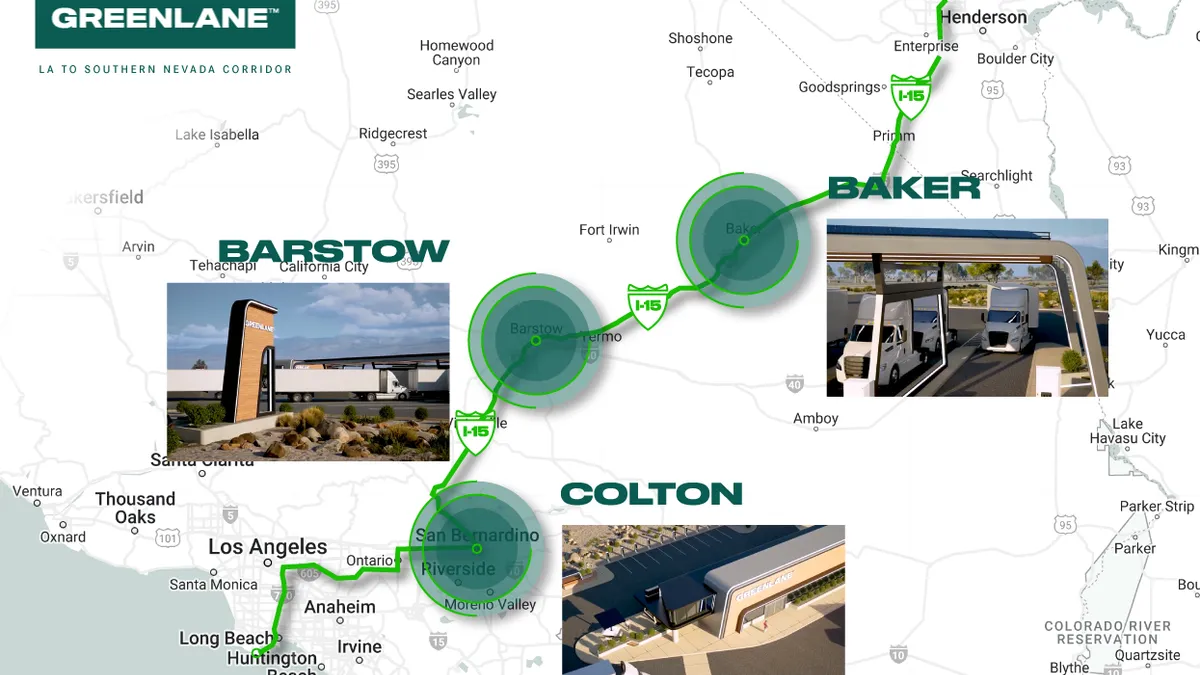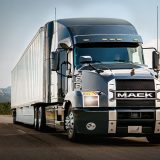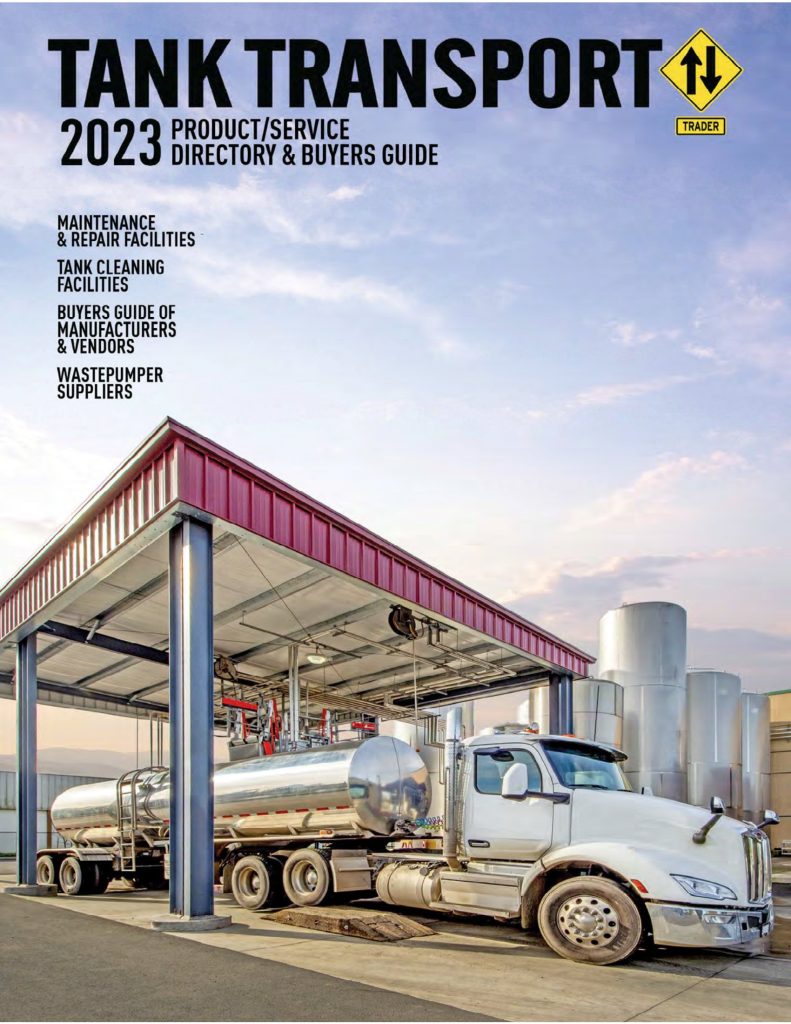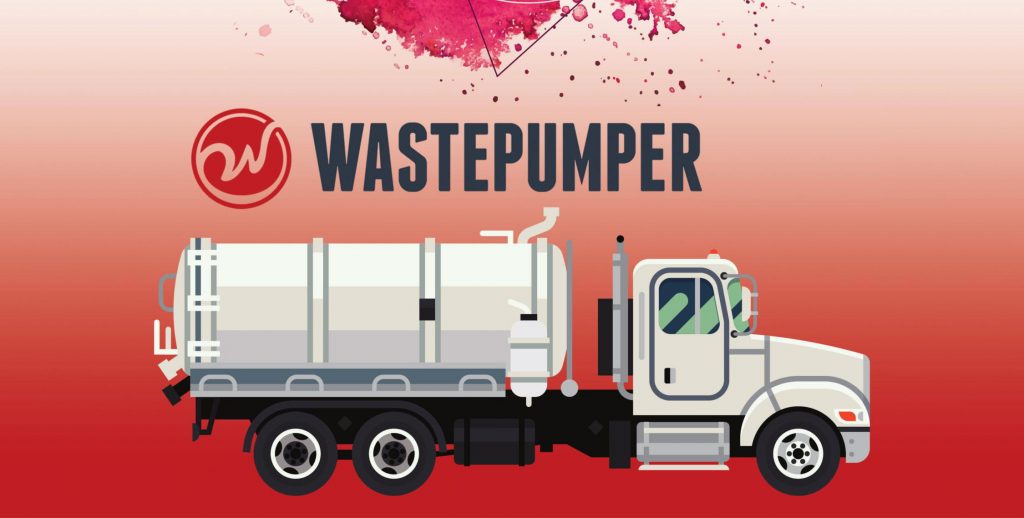- Discover how the Greenlane EV Charging Corridor is transforming zero-emission trucking through large-scale fast-charging sites.
- Uncover the funding strategies driving a nationwide rollout of commercial electric vehicles and advanced clean fleets.
- Find out how innovative battery storage and the Megawatt Charging System set the stage for the future of heavy-duty EV adoption.
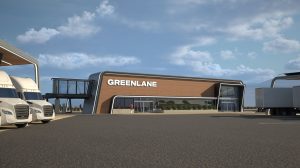
The Greenlane EV Charging Corridor aims to energize commercial electric vehicles along high-traffic routes.
The Greenlane EV Charging Corridor is a groundbreaking collaboration focused on fueling commercial electric vehicles along critical freight routes. Spearheaded by Daimler Truck North America, NextEra Energy Resources, and BlackRock, this joint venture aims to establish a robust network of fast chargers that accommodate everything from light-duty vans to heavy-duty EV charging for Class 8 trucks. –To see how this market is evolving for fleets operating heavy-duty trucks, check out our heavy-duty trucks overview.
From the flagship station in Colton, California, to future expansions across key corridors, stakeholders are determined to boost sustainable transportation infrastructure and accelerate the adoption of zero-emission trucks nationwide. Notably, this approach aligns with broader industry movements, such as Tesla’s dedicated Semi charging network and Europe’s growing Megawatt Charging System (MCS) initiatives, which all share the mission to create reliable, high-power solutions for electric freight. –For additional insights on fleet electrification trends, explore these electric trucks updates.
What Is the Greenlane EV Charging Corridor?
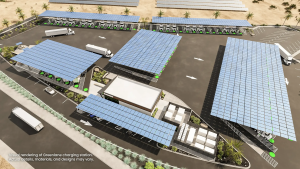
Short-term plans include over 60 chargers at the Colton flagship site, setting a model for nationwide growth.
The Greenlane EV Charging Corridor is an ambitious project designed to meet surging demand for commercial electric vehicles and address the urgent need for a dedicated public charging network. Its pilot segment stretches from the Los Angeles area to Las Vegas, concentrating on Interstate 15 to serve a high volume of freight and logistics traffic. By ensuring fast and reliable access to chargers, Greenlane’s initiative helps fleets comply with emission regulations compliance targets and provides a scalable path toward advanced clean fleets. –If you want more details on ongoing Tesla Semi rollouts, head over to our Tesla Semi developments.
Short-term plans include opening the first flagship site in Colton with over 60 chargers. At full build, each station will cater to various vehicle classes, reflecting an industry-wide push for zero-emission trucks and other battery-electric vehicles. Long-term, the corridor will expand into other states, connecting vital trade lanes and reducing the carbon footprint of heavy transport. In contrast to Tesla’s Semi charging network—which largely remains proprietary to Tesla vehicles—Greenlane’s corridor is designed to support multiple truck brands, echoing a more inclusive approach akin to Europe’s Milence joint venture (Volvo, Daimler Truck, TRATON), which targets cross-manufacturer interoperability for the Megawatt Charging System. –Stay updated on new corridor announcements and charging station developments shaping the next generation of freight transport.
Enjoying our insights?
Subscribe to our newsletter to keep up with the latest industry trends and developments.
Stay InformedWhy Does the Greenlane EV Charging Corridor Matter?
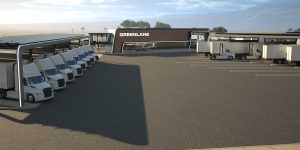
Government grants and private investment power a new wave of zero-emission trucking solutions.
The world of sustainable transportation infrastructure is evolving rapidly, and large-scale projects like the Greenlane EV Charging Corridor symbolize a decisive shift in how freight moves across regions. Although government agencies and industry leaders have set ambitious goals for decarbonizing transportation, real-world adoption of electric trucks hinges on accessible, high-power charging. This corridor delivers tangible solutions:
- Reducing Emissions Along Freight Routes
Conventional diesel trucks contribute significantly to air pollution. By creating a corridor dedicated to electric freight operations, Greenlane helps curb local pollutants and greenhouse gases. European initiatives, such as installing MCS-compatible chargers at regular intervals along major highways, mirror this goal of cutting commercial vehicle emissions at scale. - Accelerating Infrastructure Investment
Through partnerships with state and local agencies—exemplified by a recent $15 million grant from the South Coast Air Quality Management District—Greenlane expedites charging site development. This model of combining private capital with public funds is paving the way for broader industry adoption, much like the approach used by European consortia receiving EU grants to build high-power stations for zero-emission trucks. –Discover additional opportunities and the latest government grants supporting EV infrastructure. - Anchoring Future Projects
Early flagship sites like Colton act as proof-of-concept for building larger networks across multiple states. These initial successes can attract more investment, speed up permitting, and refine best practices for design and deployment. In Europe, a similar template is apparent with the “Milence” joint venture, which aims to install at least 1,700 high-performance charging points across hundreds of sites, providing lessons on fast, multi-country scaling.
Greenlane EV Charging Corridor: Funding and Partnerships
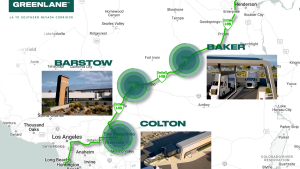
Future-proofing each site with Megawatt Charging Systems lays the groundwork for near-megawatt-speed charging.
The Greenlane EV Charging Corridor benefits from a powerful blend of public and private financing. Daimler Truck North America’s expertise in zero-emission trucks, NextEra’s deep knowledge of energy infrastructure, and BlackRock’s financial muscle collectively anchor the joint venture. This approach ensures:
- Substantial Capital Investment
An initial $650 million commitment underscores the readiness to implement large-scale charging infrastructure. Additional grants, like the $15 million from South Coast AQMD, reduce risk and accelerate site construction. In Europe, the Volvo–Daimler–TRATON “Milence” JV relies on a similar high-level commitment—€500 million to start—plus public EU subsidies to expand coverage for commercial electric vehicles. - Collaborative Site Selection
Greenlane works with data-driven logistics partners, such as Uber Freight, to identify optimal station locations along busy trucking corridors. This alignment of resources, data, and expertise helps ensure that each charging site meets real freight demands. Likewise, Pilot/Flying J in the U.S. and major OEMs in Europe pinpoint high-traffic freight zones to deploy high-power charging stations, tapping into existing truck-stop amenities. –Explore similar joint ventures and industry partnership insights to see how collaboration accelerates EV deployment. - Public-Private Synergy
Agencies such as the California Energy Commission and air quality boards see these stations as crucial to meeting climate goals. Consequently, more corridors and expansions are planned, providing fleets with reliable routes for battery-electric and potentially hydrogen vehicles in the future.
“This synergy parallels Europe’s public co-funding model, where the shift toward the Megawatt Charging System gets a boost from the Alternative Fuels Infrastructure Regulation (AFIR).”
Greenlane EV Charging Corridor: Emerging Technology
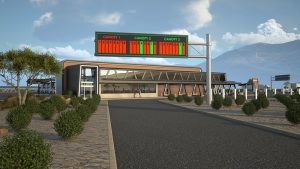
Aligned with Europe’s Milence joint venture, Greenlane highlights the importance of multi-brand interoperability.
To accommodate heavy-duty EV charging requirements, the Greenlane EV Charging Corridor integrates advanced power solutions. Today’s chargers typically range from 150 kW to 400 kW, but electric trucks soon will require the Megawatt Charging System to reduce dwell times effectively. As these standards roll out, Greenlane’s sites plan to upgrade:
- High-Power Output
Megawatt Charging Systems will transfer immense power, potentially adding hundreds of miles of range in under an hour. This technology is pivotal for long-haul trucking routes. Tesla has already showcased 750 kW–1 MW charging for its Semi, while European consortiums are piloting 700+ kW MCS prototypes, demonstrating the feasibility of near-megawatt speeds. - Battery Storage Integration
Stationary battery systems can buffer peak loads. By storing power when utility rates are low or solar production is high, these sites can lower operating costs and reduce strain on the grid. The Milence network in Europe is similarly exploring on-site energy storage, learning from smaller-scale pilots such as Germany’s HoLa project, which tests large battery buffers at high-power truck stops. - Smart Charging Management
Software platforms that balance multiple vehicles charging at once improve station uptime and enhance reliability. Fleet operators can track charging sessions in real time, manage costs, and schedule dispatches more efficiently. Across the Atlantic, similar approaches ensure consistent uptime for multi-brand trucks under different operating conditions, reflecting a best-practice trend in commercial EV charging.
How the Greenlane EV Charging Corridor Addresses Key Challenges
1. Grid Capacity and Demand Charges
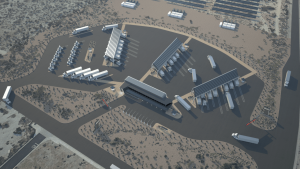
Flexible solutions integrating battery storage help address grid constraints and trim operating costs.
High-power charging for commercial electric vehicles can strain local grids. To mitigate this, sites in the Greenlane EV Charging Corridor often incorporate on-site storage or partner with utilities for upgraded feeder lines. Managed charging strategies, in tandem with energy storage, help soften peak demand and reduce electricity costs. Pilot/Flying J and Tesla also focus on utility partnerships to ensure adequate grid supply, while Europe’s structured regulations provide funding for grid upgrades, reinforcing the necessity of early planning.
2. Reliable Fleet Experience
Professional drivers demand minimal downtime. To maintain high uptime, stations rely on robust equipment, consistent maintenance, and real-time monitoring. Redundancies—such as multiple chargers per site—ensure a truck has alternatives if one unit goes offline. European initiatives tie funding to uptime guarantees (often 97% or higher), indicating that reliability commitments are becoming the global norm. Tesla’s vertically integrated network achieves reliability by controlling hardware, software, and station design, whereas Greenlane’s open model requires carefully coordinated vendor and service-level agreements.
Shaping the Future of Commercial EV Charging
1. Nationwide Expansion
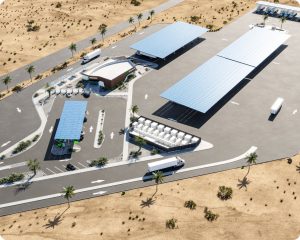
Public-private synergy accelerates corridor expansions, enabling both battery-electric and hydrogen fueling.
Beyond California, the Greenlane EV Charging Corridor framework is ready to scale to Texas, the Northeast, and other industrial regions. As more zero-emission trucks hit the roads, broader coverage across high-traffic routes becomes essential. Europe’s Milence JV exemplifies fast multi-nation deployment, using standardized Megawatt Charging System technology and strong government backing to reach hundreds of stations in just a few years. –For more coverage on eco-friendly fleet initiatives, see our zero-emission trucking news.
2. Hydrogen Integration
While battery-electric solutions dominate early development, hydrogen fuel cell technology is also on the horizon for long-distance transport. Greenlane envisions adding hydrogen refueling to future stations, offering fleets a range of low-emission options. Similar expansions have been proposed in Europe, though they typically occur in parallel with battery charging rather than fully replacing it. The synergy of multiple zero-emission fuels provides flexibility and ensures that each technology can address specific operational needs. –Learn more about corridor expansions and infrastructure development coverage helping shape tomorrow’s supply chain.
Greenlane EV Charging Corridor and Policy Impact
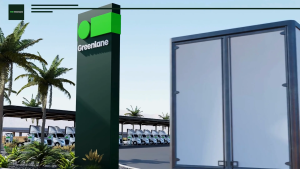
Professional drivers demand minimal downtime, making uptime and real-time monitoring top priorities.
Federal and state policies have a profound influence on projects like the Greenlane EV Charging Corridor. At the national level, the Bipartisan Infrastructure Law earmarks $7.5 billion for EV charging, while programs such as NEVI and CFI grants funnel resources into corridor-based charging networks. Meanwhile, California’s Advanced Clean Fleets rules compel a swift transition to zero-emission trucks, creating strong demand for corridors that facilitate real-world fleet operations. –Understand the implications of California’s Advanced Clean Fleets rules on both local and long-haul operators.
In Europe, similar regulatory frameworks, including the Alternative Fuels Infrastructure Regulation (AFIR), mandate consistent high-power chargers along primary trans-European corridors. Truck OEM alliances also receive substantial EU funding to meet these ambitious targets. This structured approach ensures an accelerated rollout of Megawatt Charging System stations, guiding the industry toward uniform standards and consistent user experiences. Greenlane can draw lessons from such coordinated policies, leveraging federal and state-level incentives in the U.S. to expand beyond its initial routes and shape a more widespread, reliable network.
Greenlane EV Charging Corridor: Essential Takeaways
- Robust Funding and Partnerships
Collaboration among industry giants, local governments, and utilities accelerates the corridor’s growth and underscores investor confidence in commercial EV charging. Similar alliances in Europe and the U.S.—like Tesla’s customer-focused model and Pilot’s truck-stop-based approach—show that a multi-stakeholder strategy is essential for rapid deployment. - Technological Milestones
From high-power connectors to advanced energy management, the corridor’s infrastructure keeps pace with evolving zero-emission trucking needs. Worldwide, the push toward megawatt-level charging is reshaping best practices, ensuring commercial electric vehicles have sufficient power to move heavy cargo efficiently. - Nationwide Significance
This corridor’s successful build-out will serve as a template for similar projects in other states, solidifying the path to large-scale emission reductions and greener supply chains. Observing how Tesla’s Megacharger network and Europe’s Milence JV expand can provide additional insights. All these efforts, combined, demonstrate the collective momentum toward heavy-duty EV charging as a cornerstone of advanced clean fleets.
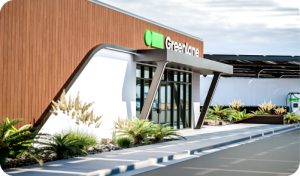
As the corridor extends beyond California, fleets gain confidence in EV routes that accelerate cleaner freight movement.
By weaving the lessons gleaned from Tesla’s vertically integrated approach, the Pilot/Flying J and Volvo partnership’s truck-stop strategy, and Europe’s joint venture commitments, the Greenlane EV Charging Corridor stands poised to redefine sustainable transportation infrastructure in the U.S. As this network grows, fleets will gain confidence in zero-emission trucks, amplifying both environmental benefits and long-term operational advantages.
Closing Insights: Greenlane EV Charging Corridor
Key Developments
- Multi-Million-Dollar Grants: Joint venture partners continue to secure substantial public funding, boosting investor confidence and accelerating construction timelines.
- Megawatt Charging System (MCS): Advanced power solutions, including MCS and battery storage, ensure scalable, high-speed charging that accommodates zero-emission trucks now and in the future.
- Supportive Policies: Federal and state-level regulations—such as California’s Advanced Clean Fleets rule—complement Greenlane’s mission, fostering a nationwide shift toward clean freight corridors.
- Reliability & Uptime: Rigorous maintenance, on-site energy storage, and redundant chargers tackle grid challenges, delivering consistent service crucial for fleet operations.
- Strategic Public-Private Collaboration: Partnerships with state agencies, utilities, and major logistics data providers optimize site selection and deployment strategies across high-traffic freight routes.
- Future Hydrogen Integration: Plans for hydrogen fueling underline Greenlane’s flexibility, offering multiple low-emission alternatives to serve diverse fleet needs.
- National Expansion Potential: With the flagship Colton site as a proof-of-concept, Greenlane is poised to broaden its network beyond California, reducing emissions across key interstate corridors.
Greenlane EV Charging Corridor – Key Official Sources & Documents
Greenlane Joint Venture – Official Press Releases
- Introducing Greenlane – Daimler Truck, NextEra & BlackRock EV Charging Joint Venture (Apr 2023 Press Release) – Announcement of the $650 million Greenlane partnership to develop a nationwide high-performance charging network for medium- and heavy-duty electric and hydrogen trucks. daimlertruck.com
- Greenlane Announces 280‑Mile Los Angeles–Las Vegas Charging Corridor (Mar 2024) – Press release detailing Greenlane’s first EV charging corridor along I-15 (Los Angeles to Las Vegas) with over 100 chargers across sites in Colton, Barstow, and Baker, CA. drivegreenlane.com
- Greenlane Colton Flagship Site Groundbreaking & SCAQMD Grant (Sept 2024) – News release from Daimler Truck North America announcing the construction start of Greenlane’s first charging hub in Colton, CA and a $15 million grant from South Coast AQMD. northamerica.daimlertruck.com
Government Funding & Incentive Programs for EV Infrastructure
- South Coast AQMD Grant for Greenlane Colton Charging Site – Press Release (Sept 9, 2024) announcing a $15 million award to Greenlane under the Carl Moyer Zero-Emission Infrastructure program. drivegreenlane.com
- National Electric Vehicle Infrastructure (NEVI) Formula Program (FHWA) – A $5 billion program (FY2022–2026) providing formula funds to states to deploy EV fast chargers along highways and designated alternative fuel corridors. afdc.energy.gov
- Charging and Fueling Infrastructure (CFI) Discretionary Grants (FHWA) – A federal grant program (totaling $2.5 billion from 2022–2026) for publicly accessible EV charging and other alternative fueling infrastructure. afdc.energy.gov
- California “EnergIIZE” Commercial Vehicles Infrastructure Program (CEC/CALSTART) – A state incentive program funded by the California Energy Commission to support medium- and heavy-duty ZEV infrastructure. energy.ca.gov
EV Charging Infrastructure – Regulations & Standards
- CEC EV Charger Reliability Standards (AB 841) – California Energy Commission regulations (effective Jan 2024) that require all state- or ratepayer-funded EV chargers to meet 97% uptime over 5 years. energy.ca.gov
- FHWA NEVI Standards – Federal EV Charging Minimum Requirements (Feb 2023) – The Federal Highway Administration’s final rule establishing uniform standards for EV charging funded under NEVI and related federal programs. afdc.energy.gov
- CARB Zero-Emission Infrastructure Readiness Goals – California Air Resources Board guidance and targets for charging infrastructure to support the state’s ZEV mandates. For example, CARB notes an ambitious goal of 250,000 public EV chargers (including 10,000 fast chargers) by 2025 to support 1.5 million ZEVs. ww2.arb.ca.gov
Megawatt Charging System (MCS) – High-Power Charging Standards
- CharIN Launches Megawatt Charging System (MCS) for Heavy-Duty EVs – CharIN (Charging Interface Initiative), an industry alliance, introduced the MCS connector in June 2022 as a new global standard for ultra-high-power charging. charin.global
- SAE J3271 – Megawatt Charging Standard Under Development – SAE International’s work-in-progress standard J3271 codifies the requirements for MCS in North America. kvaser.com (Note: MCS has also been developed in coordination with global standards bodies IEC/ISO and CharIN to ensure worldwide compatibility.)
Additional Context – Plans and Reports on EV Freight Corridors
- National Zero-Emission Freight Corridor Strategy (2024) – A comprehensive federal strategy (developed by the Joint Office of Energy & Transportation, DOE, DOT, and EPA) to build a “ubiquitous and affordable” charging and hydrogen refueling network for zero-emission trucks by 2040. energyconnects.com
- FHWA Alternative Fuel Corridors (AFC) Program – Ongoing designation of highway corridors for EV charging and other alternative fuels by the Federal Highway Administration. afdc.energy.gov

